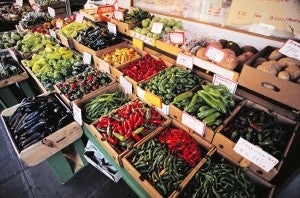E.A.T. Foundation – Connects Us to Ag
Kelly Deming Giacomazzi on the E.A.T. Foundation
By Charmayne Hefley, Associate Editor
There is a disconnect between consumers and an understanding of where their food originates. Kelly Deming Giacomazzi is the executive coordinator for the Education and Agriculture Together Foundation—better known as the E.A.T. Foundation—a Hanford-based nonprofit that bridges this disconnect by providing educators with hands-on learning tools to teaching their students how food and other agricultural products are produced.
“They teach their students that jeans don’t just come from Old Navy or Walmart,” Giacomazzi said, “and their daily food doesn’t come from the grocery store.”
Giacomazzi said the E.A.T. Foundation offers several workshops for educators, including a 3-day “Intro to Ag” program, during which educators from all over the state are hosted by local farm families. “This is where the hands-on learning takes place. For example, educators learn to drive a tractor, siphon-irrigate, spray for bugs with a Pest Control Advisor (PCA), and visit a dairy. In the past and occasionally now, we visit the UC Davis Veterinary Medicine Teaching and Research Center (VMTRC) and AgVentures! at the Heritage Complex, both of which are in Tulare County, to give teachers a brief overview of what agriculture is doing to provide food and clothes for people in the state and in the nation.”
Giacomazzi also said E.A.T. hosts a two-day workshop on water. “We tour a hydroelectric plant, a dam/reservoir area, and distribution centers,” Giacomazzi said. “We talk about water laws, environmental impacts, and farm efficiency as well.”
The Foundation also offers summer and fall harvest workshops, plus a career workshop. Giacomazzi stated, “Many scholarship funds are available for agriculture majors, yet there aren’t enough students majoring in this field.”
























